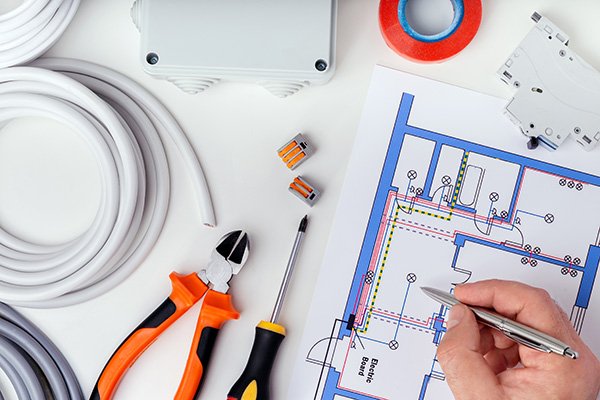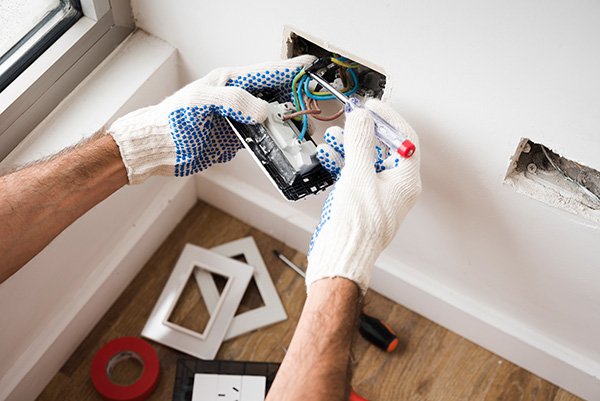A Generalpurpose Branch Circuit May Feed
There's a simple way to understand your home's electrical system. The main service wires reach your home from an overhead utility line or underground feeder wires. They then connect to the main service panel which sends the wires to serve your household appliances and gadgets. This part is the branch circuit.
While the main electrical system hardware such as wires and equipment belongs to a power utility company, anything beyond the meter base and meter is the property of the homeowner. The current from the main service panel is divided into individual branch circuits which are controlled by separate circuit breakers.
What is a branch circuit?
A branch circuit is that part of an electric circuit that extends beyond the last circuit breaker or fuse. It goes from the breaker box to the electrical devices in your home. Simply put, branch circuits are the last part of the main electrical circuit, and supply current to various electrical devices.
Based on the type of loads they serve or their current carrying capacity, branch circuits are classified into either 120-volt branch circuits that supply power to standard outlets and 240-volt circuits that power major appliances.
Read more: Important things to consider in electrical work when renovating
What is a branch circuit according to the NEC?

The National Electrical Code (NEC) is part of the National Fire Protection Association (NFPA). According to NEC, a branch circuit basically has a circuit conductor between the final overcurrent protection device (OCPD) and the electrical outlets.
It mandates that a licensed electrician must install the branch circuit to ensure a secure and safe power supply.
Read more: 5 warning signs telling you when to call an electrician
What is the purpose of a branch circuit?
A branch circuit, protected by a circuit breaker, is a very crucial safety feature of your home's electrical wiring. Its main job is to ensure an uninterrupted power supply to your home appliances. Most importantly, the branch circuit (with the help of the circuit breaker) identifies when too many devices are connected, say in your kitchen or living room. It detects any fault and discontinues the flow of electricity.
Branch circuit amperage
There's a rule when it comes to branch circuits — the ampacity of branch-circuit conductors should not be less than the load. And also, the circuit wires must be able to handle the load of the branch circuit.
While the original circuits in your home will be wired correctly in all likelihood — when a circuit is being extended, the new wiring system should have the appropriate gauge for the circuit amperage.
For example, a 14-gauge copper wire is appropriate for 15-amps, a 6-gauge copper wire for 60-amps, and a 2-gauge copper wire for 100-amps. If you attach wires that are insufficient for the circuit amperage, it poses a fire hazard.
To accommodate different types of load, the two types of branch circuits, 120 volts and 240 volts, vary in the amount of power (or amperage) they deliver. While 120-volt circuits are 15 or 20-amp circuits, 240-volt circuits have more amperage (30, 40, 50, or 60-amp).
If you want to know the amperage of branch circuits, you can read the label on the lever of each circuit breaker.
Read more: Domestic electrical wiring: GFI vs GFCI
Types of branch circuits

Here are the different types of branch circuits in your home:
- Dedicated appliance circuits: Dedicated circuits serve only one appliance — be it an electric range, a dishwasher, a refrigerator, a clothes dryer, a garbage disposer, or an air-conditioner. They can be either 120-volt or 240-volt circuits.
- Lighting circuits: These circuits serve all the general lighting needs in your house. One lighting circuit can usually serve several rooms. However, most houses have several such circuits. The advantage of having separate lighting circuits from the outlet circuits is that if by chance one circuit is shut off, the rooms will have some means of lighting. For example, you can use a plug-in lamp to illuminate an area with a faulty or a shut-off circuit.
- Outlet circuits: These circuits serve general-purpose plug-in outlets. You may have one circuit specific to a room or two outlet circuits serving multiple rooms.
- Room circuits: These individual circuit layouts may serve all lights and outlets in a particular room. Of course, it depends on how your home has been wired.
Read more: How many kitchen electrical outlets does your home need?
Key takeaway
Any circuit that extends from the final overcurrent devices to supply power further into home appliances and gadgets is a branch circuit. Such a circuit can be used to service single motors (individual appliances), room lights, or multi-wire receptacles. Most branch circuits originate at a panelboard while some originate at the safety switches.
Read more: Drip loop
![]()
Written by Ramona Sinha. October 4, 2021
Ramona is a content writer for Kukun. This experienced blogger uses simple and succinct words to decipher the complex phenomenon called life. An avid traveler, she's a digital nomad at heart and an animal lover from the depths of her soul.
Source: https://blog.mykukun.com/branch-circuit/
0 Response to "A Generalpurpose Branch Circuit May Feed"
Post a Comment